Abstract
The problem considered is that of estimating the age or rate of increase of a variant on the basis of the present number of replicates observed in a population. In place of previous diffusion equation analyses of age probability distributions, the likelihood for the age is studied on the basis of a discrete branching process model. It is shown that variations inherent in the process of gene evolution in natural populations make it impossible to provide a reliable point estimate of the age of a specified variant, although the likelihood analysis provides a confidence interval which may place useful bounds on the period in which a variant originated. The observed distribution of numbers of several variants may also provide useful information. The problems of estimation are discussed with reference to rare variants arising in American Indian populations.
Full text
PDF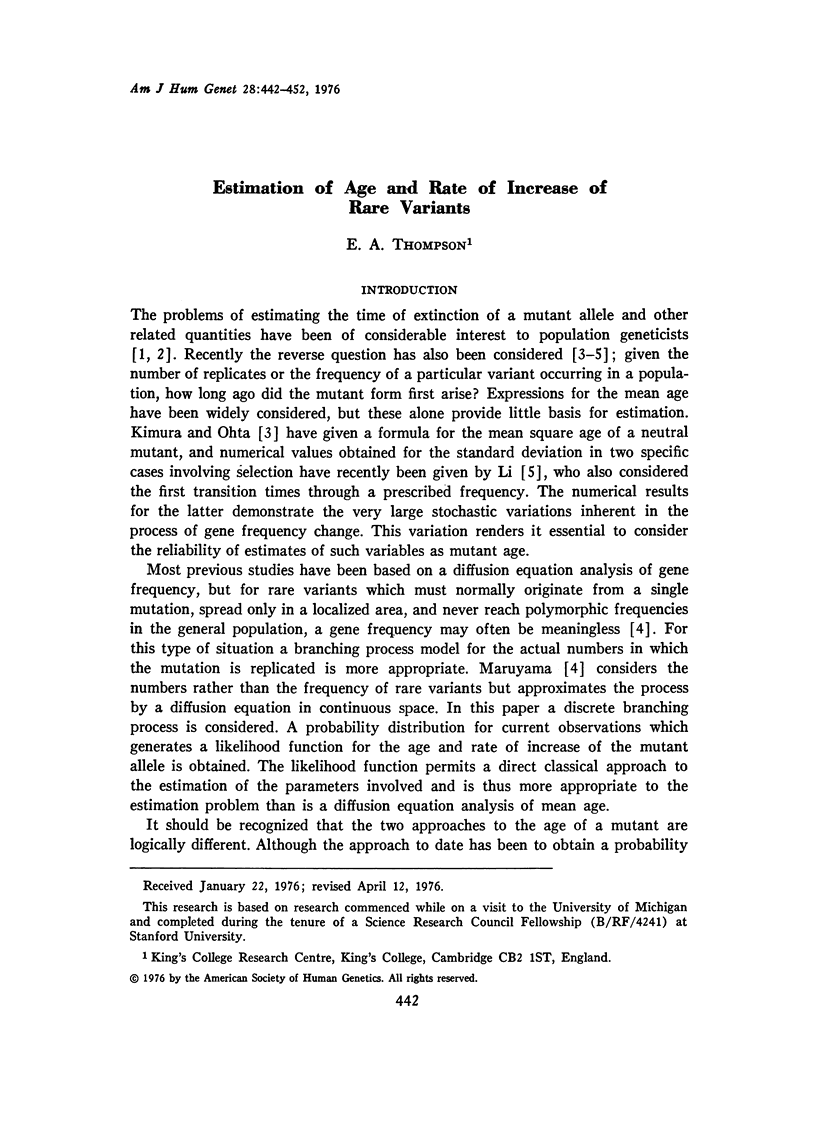
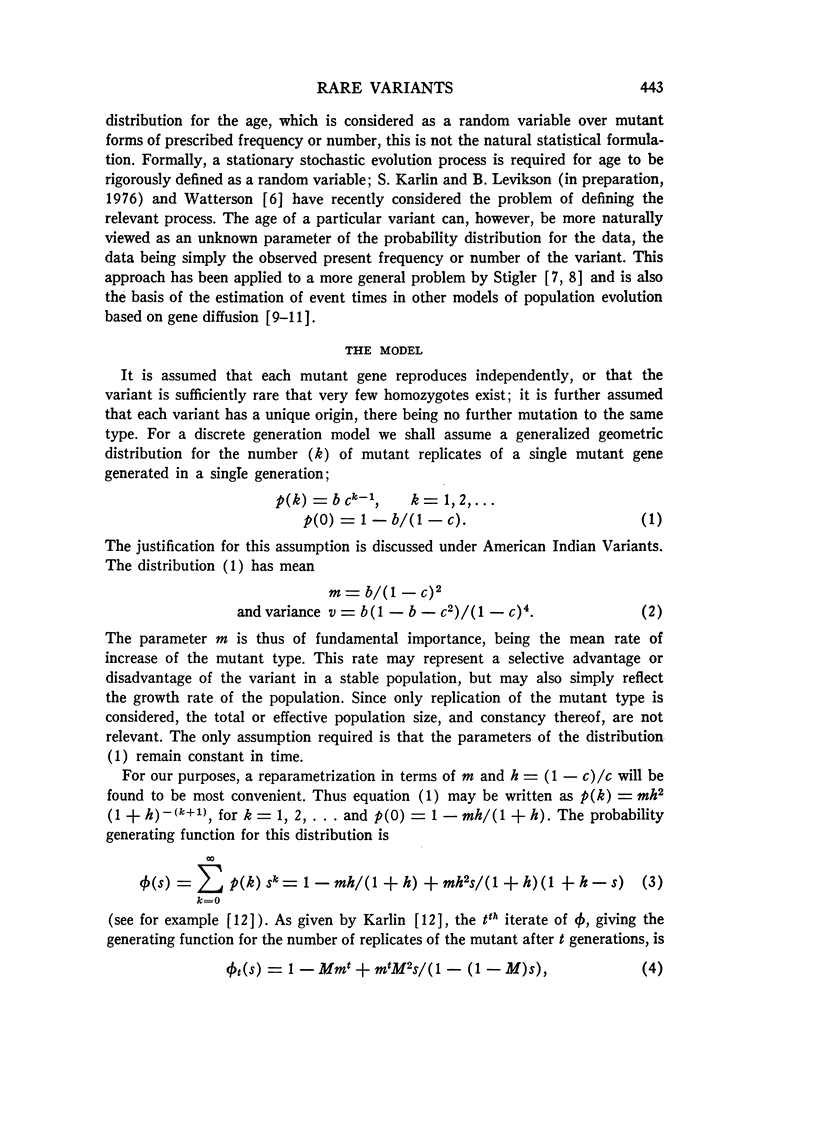
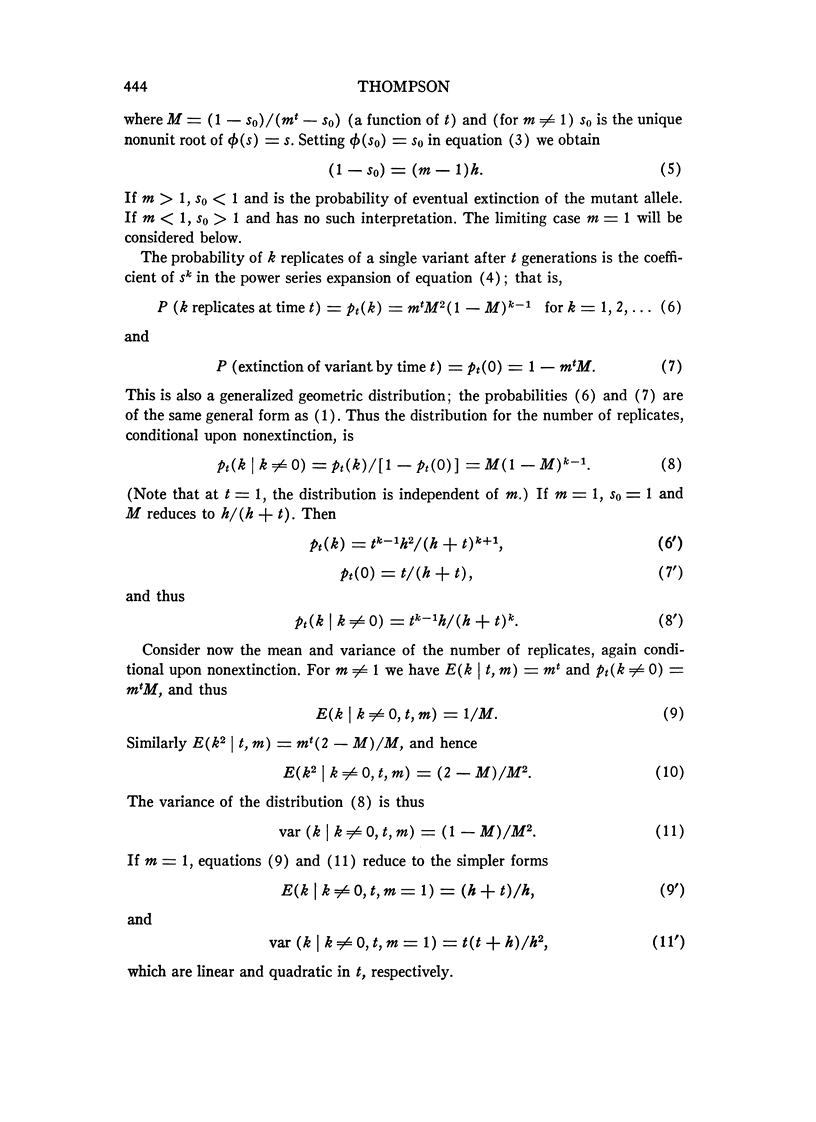
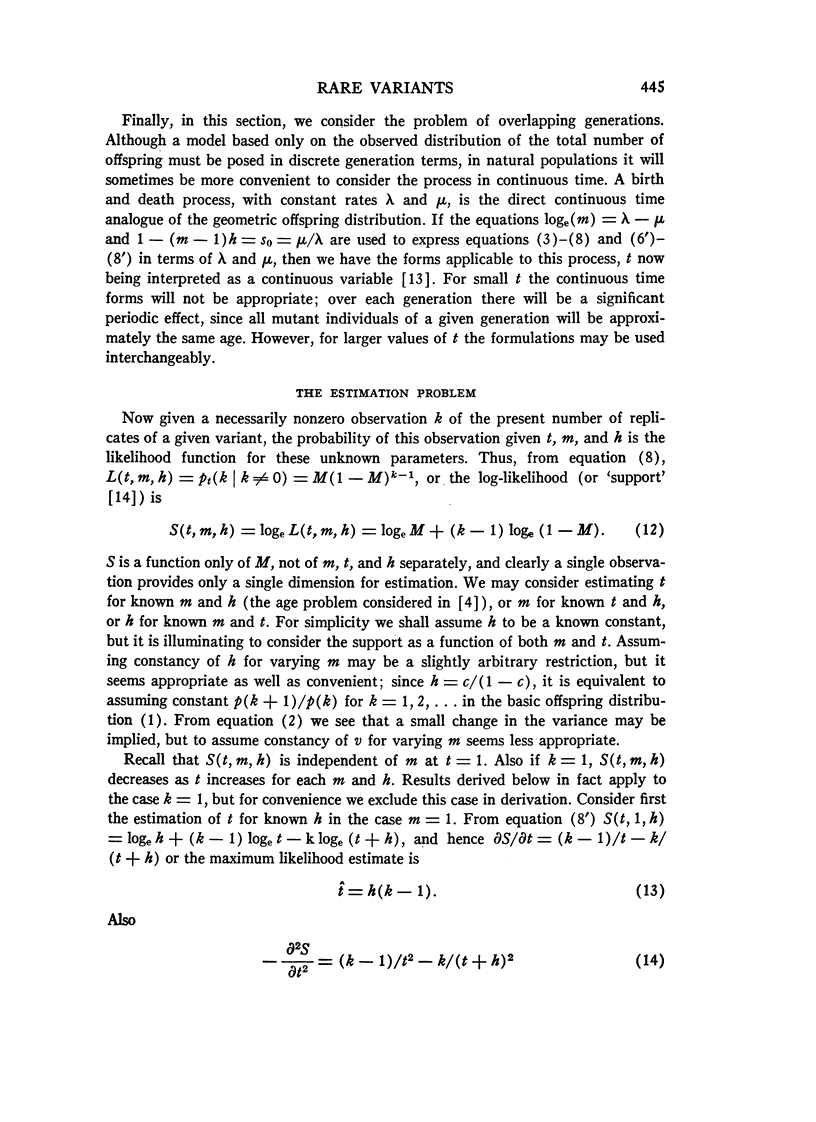
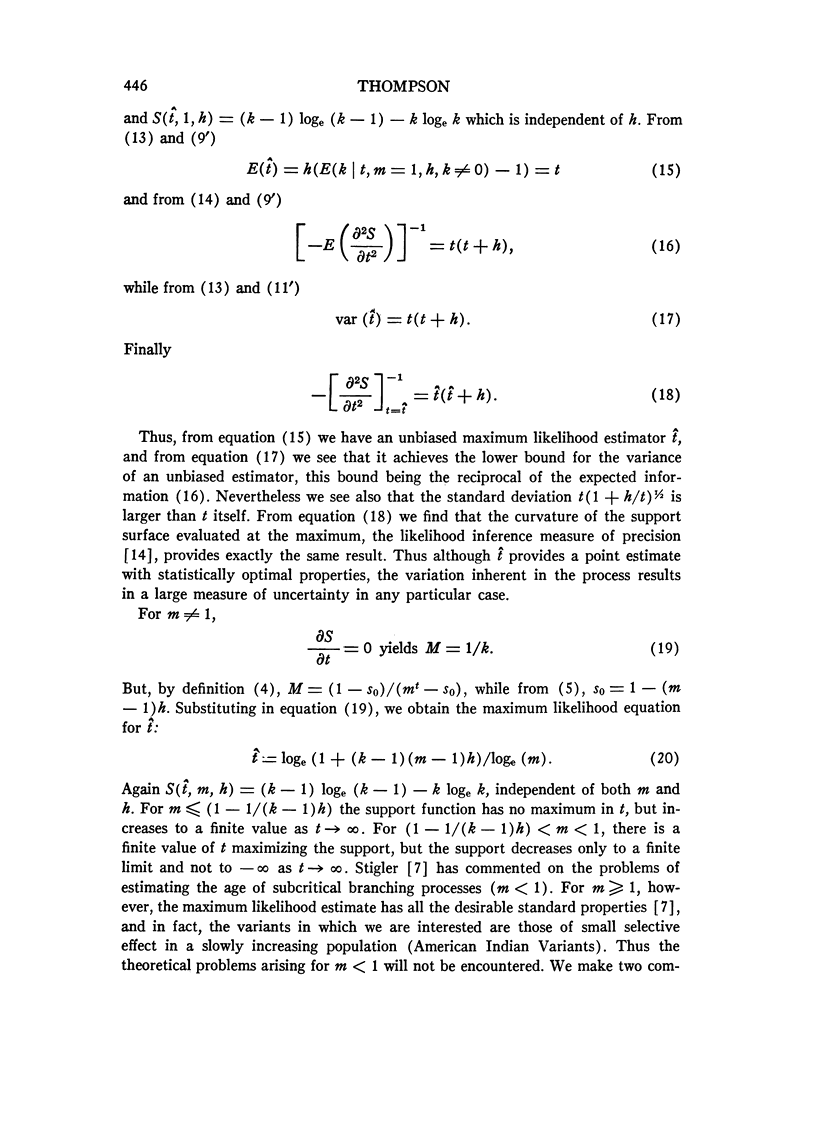
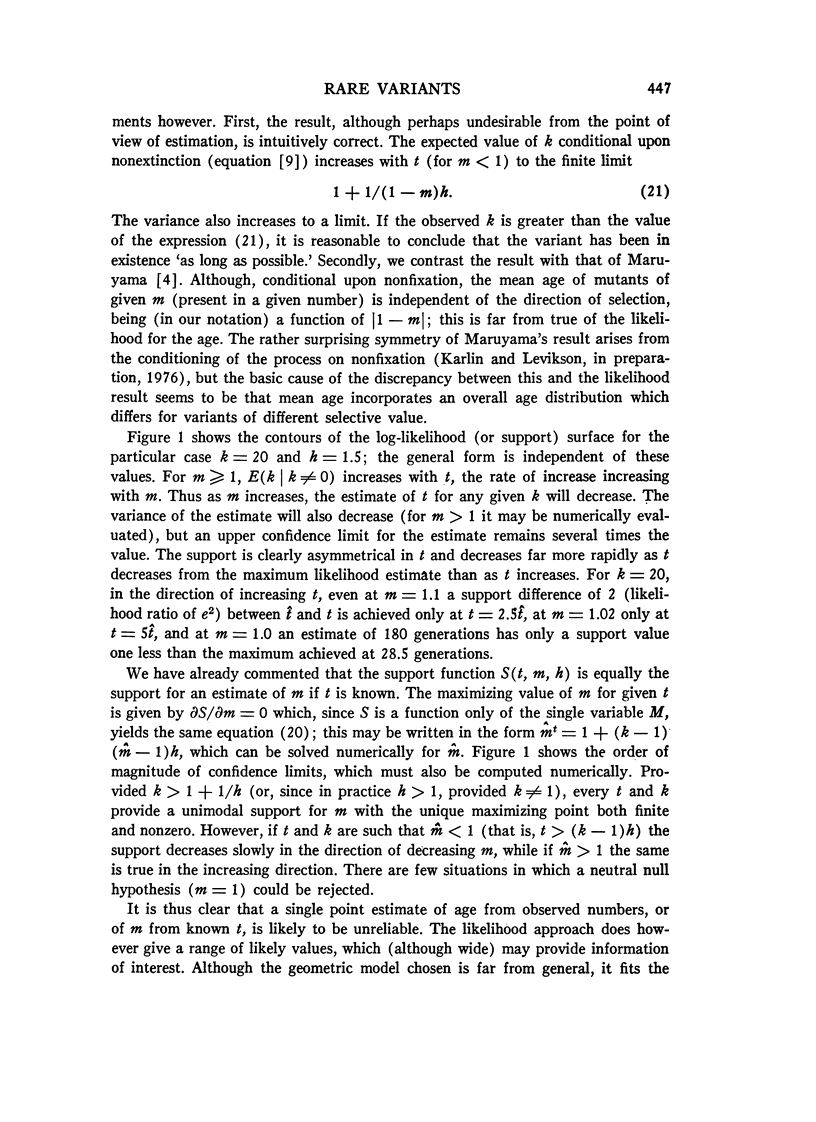
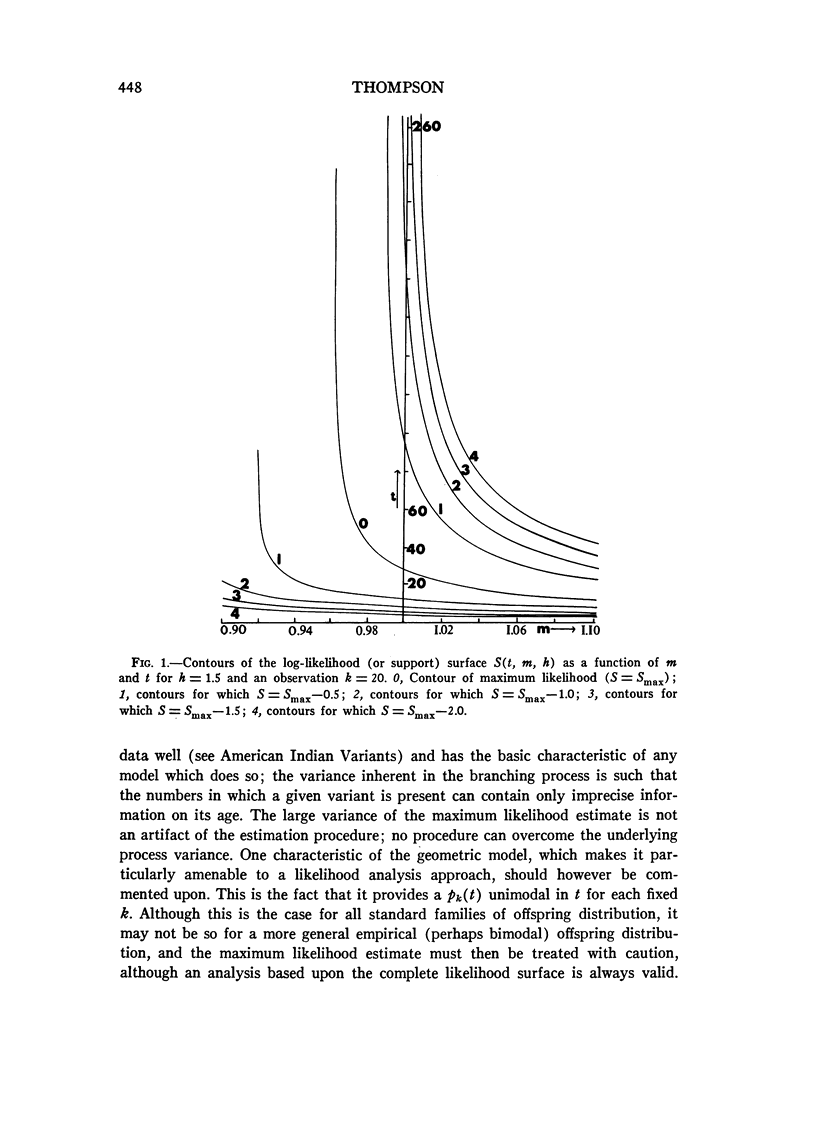
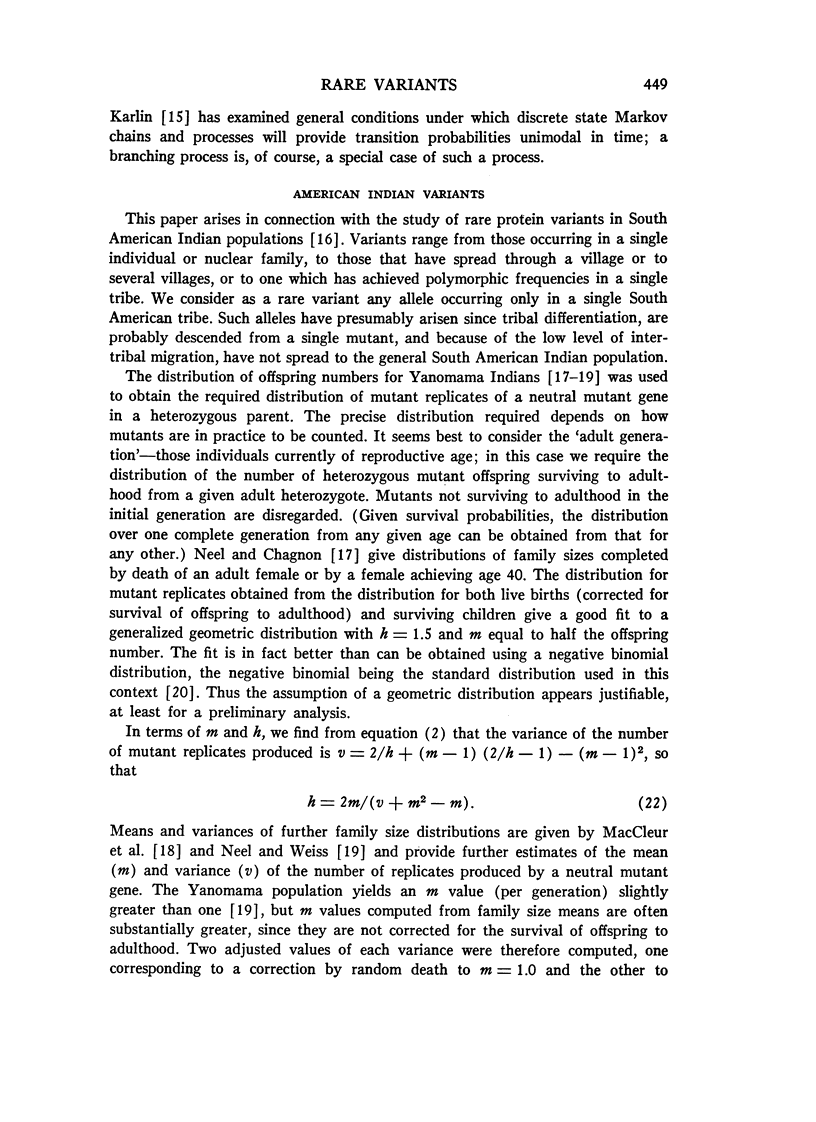
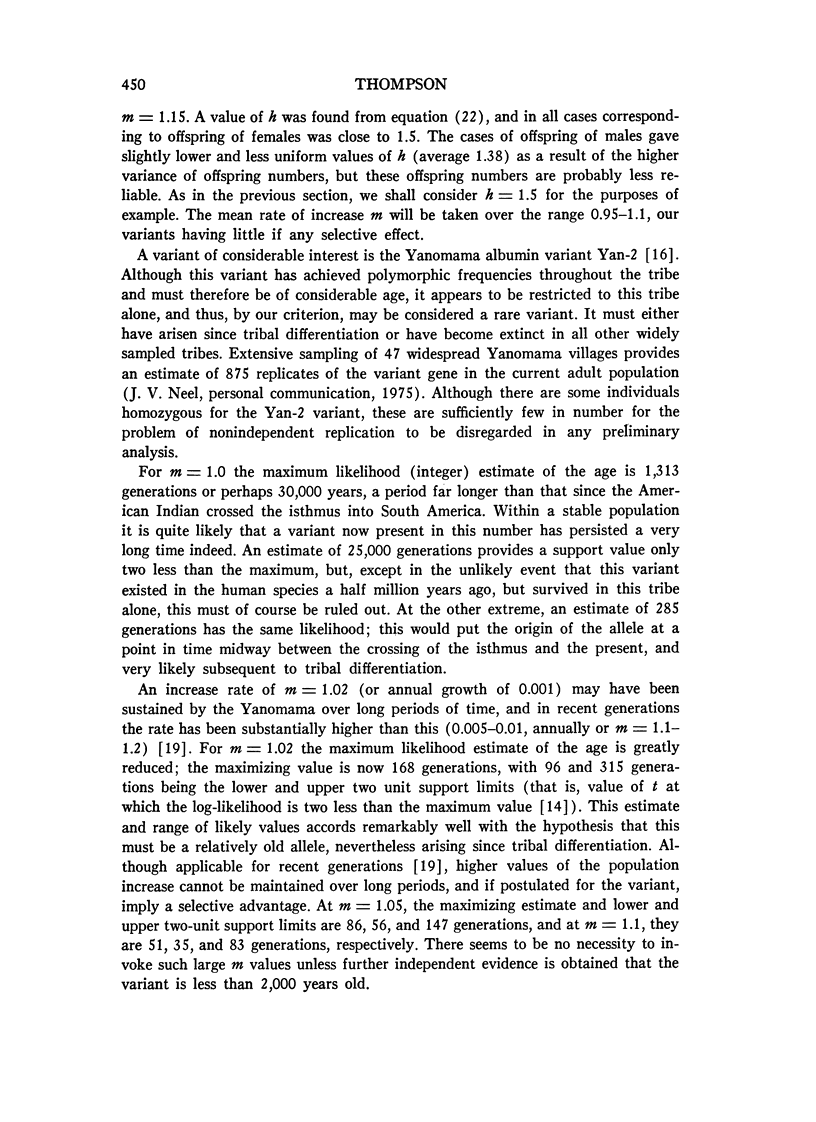
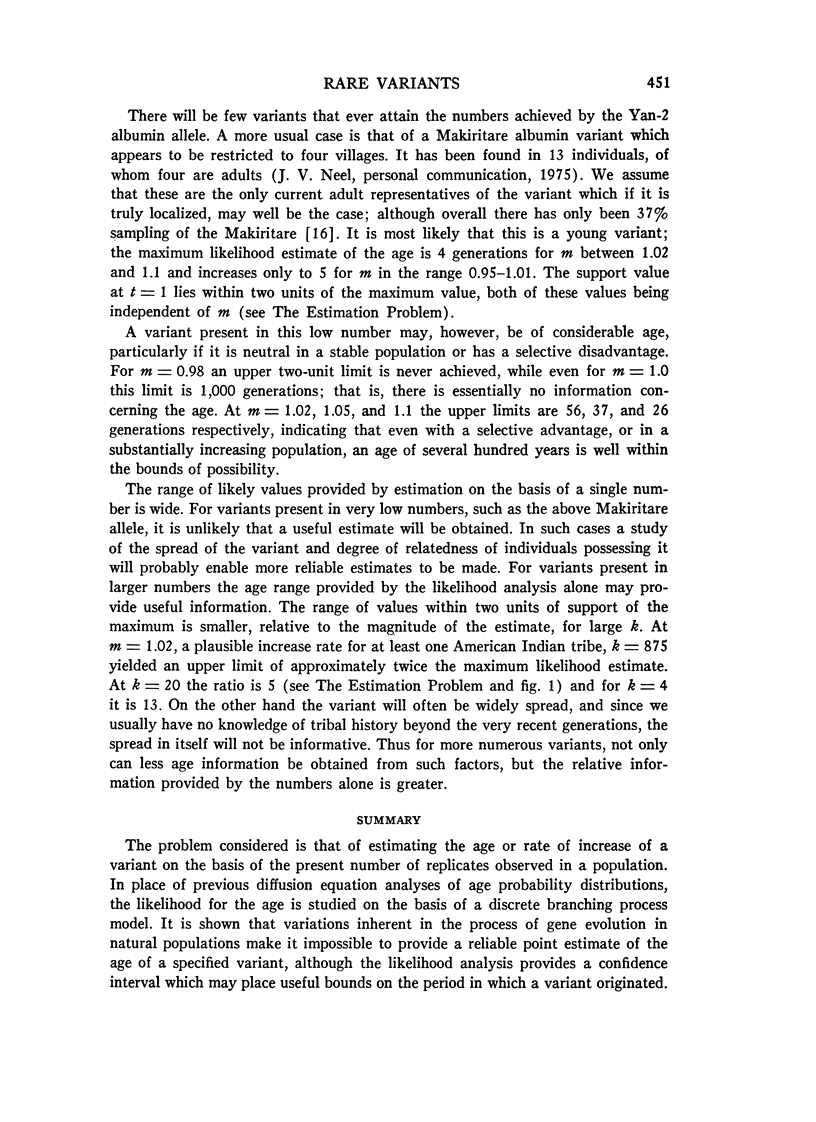

Selected References
These references are in PubMed. This may not be the complete list of references from this article.
- Felsenstein J. Maximum-likelihood estimation of evolutionary trees from continuous characters. Am J Hum Genet. 1973 Sep;25(5):471–492. [PMC free article] [PubMed] [Google Scholar]
- Kimura M., Ohta T. The Average Number of Generations until Fixation of a Mutant Gene in a Finite Population. Genetics. 1969 Mar;61(3):763–771. doi: 10.1093/genetics/61.3.763. [DOI] [PMC free article] [PubMed] [Google Scholar]
- Li W. H., Nei M. Total number of individuals affected by a single deleterious mutation in a finite population. Am J Hum Genet. 1972 Nov;24(6 Pt 1):667–679. [PMC free article] [PubMed] [Google Scholar]
- Li W. H. The first arrival time and mean age of a deleterious mutant gene in a finite population. Am J Hum Genet. 1975 May;27(3):274–286. [PMC free article] [PubMed] [Google Scholar]
- MacCluer J. W., Neel J. V., Chagnon N. A. Demographic structure of a primitive population: a simulation. Am J Phys Anthropol. 1971 Sep;35(2):193–207. doi: 10.1002/ajpa.1330350206. [DOI] [PubMed] [Google Scholar]
- Maruyama T. The age of a rare mutant gene in a large population. Am J Hum Genet. 1974 Nov;26(6):669–673. [PMC free article] [PubMed] [Google Scholar]
- Neel J. V. "Private" genetic variants and the frequency of mutation among South American Indians. Proc Natl Acad Sci U S A. 1973 Dec;70(12):3311–3315. doi: 10.1073/pnas.70.12.3311. [DOI] [PMC free article] [PubMed] [Google Scholar]
- Neel J. V., Chagnon N. A. The demography of two tribes of primitive, relatively unacculturated American Indians. Proc Natl Acad Sci U S A. 1968 Mar;59(3):680–689. doi: 10.1073/pnas.59.3.680. [DOI] [PMC free article] [PubMed] [Google Scholar]
- Neel J. V., Weiss K. M. The genetic structure of a tribal population, the Yanomama Indians. XII. Biodemographic studies. Am J Phys Anthropol. 1975 Jan;42(1):25–51. doi: 10.1002/ajpa.1330420105. [DOI] [PubMed] [Google Scholar]


